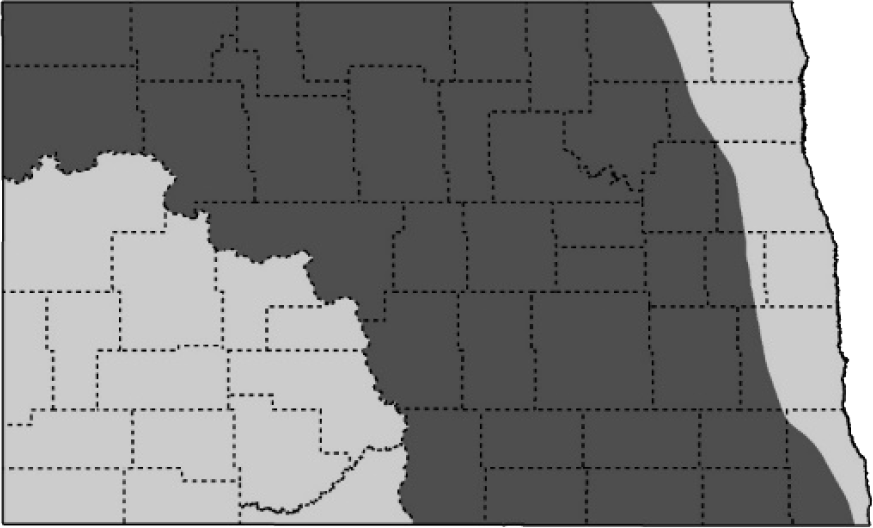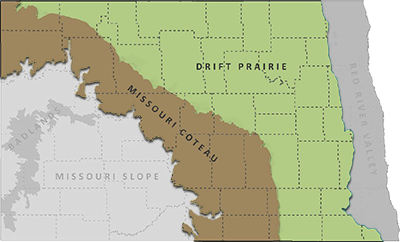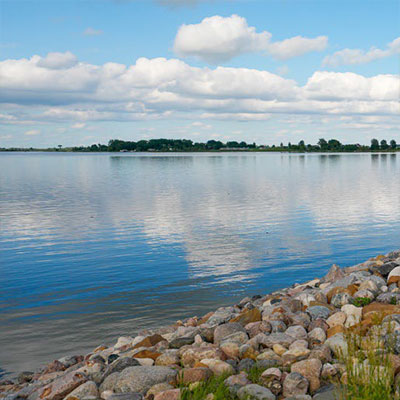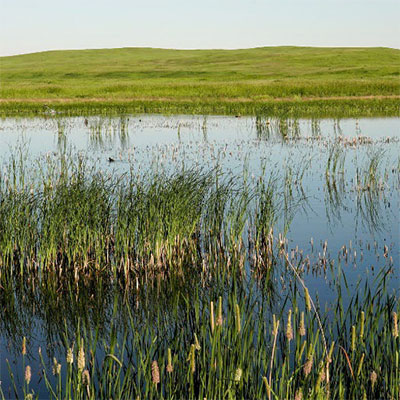Black Tern
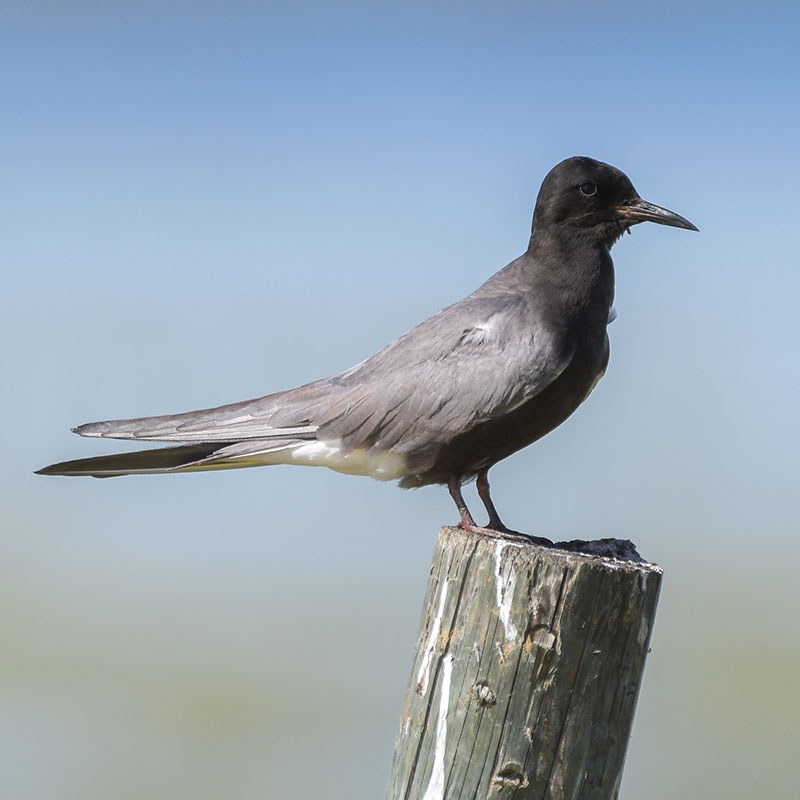
NDGF
L 9.75”, WS 24”, 2.2 oz. Nearly all black except for gray wings and white undertail.
Status in North Dakota
Occurs in North Dakota from early May to mid-September. Peak breeding season early June to mid-July.
Reason for SWAP Designation
At-risk, ND range important (SGCN b.).
ND ranks 1st out of 23 states for highest percent of the global population (8.19%) during the breeding season (eBird).
Holarctic, large population and large geographic range.
The Black Tern is declining, and ND has high stewardship responsibility for this species.
Threats
Loss and degradation of wetlands, drainage and wetland consolidation.
Hydrologic shifts in wetlands of the PPR duev to wetland consolidation and drainage, climate and land use changes (i.e. lakeification).
Classified as climate-threatened,v Black Tern is projected to lose more than half of its current distribution by 2080, with potential net gains of new areasv (Audubon).
Increasing applications of agrochemicals and adverse impacts to water quality, the wetland vegetativev community, and the aquatic invertebrate community.
More frequent or intense harmful algal blooms.
Aquatic nuisancev species spreading and damaging wetland ecosystems.
Woody vegetation around wetlands negatively affects tern presence.v Black Terns may be tolerant of human activity near nesting colonies, but colony should not be entered.
Collisions withv human-made structures (e.g. overhead lines, wind turbines).
Research and Monitoring
Habitat requirements and demographics have been researched.
Additional information is needed on migration and wintering behaviors.
The Breeding Bird Survey, eBird and Partners in Flight Databases are key sources of information on distribution and population trends.
The most recent colonial waterbird inventory in ND was conducted in 2014-2015.
Eighteen colonies were discovered, and 107 breeding pairs were estimated (mean colony size 6, range 1-20 pairs) but the survey did not encompass all areas of potential tern habitat.
Management Recommendations
- Preserve and maintain wetland complexes.
- Restore hydrology and vegetation to degraded wetlands.
- Prevent encroachment of woody vegetation around wetlands.
- Conduct management to open cattail-choked wetlands.
- Follow aquatic nuisance species rules and regulations.
- Follow beneficial or best practices during the design, siting, construction, operation, and maintenance of tall structures (e.g. transmission lines, communication towers, wind turbines).

